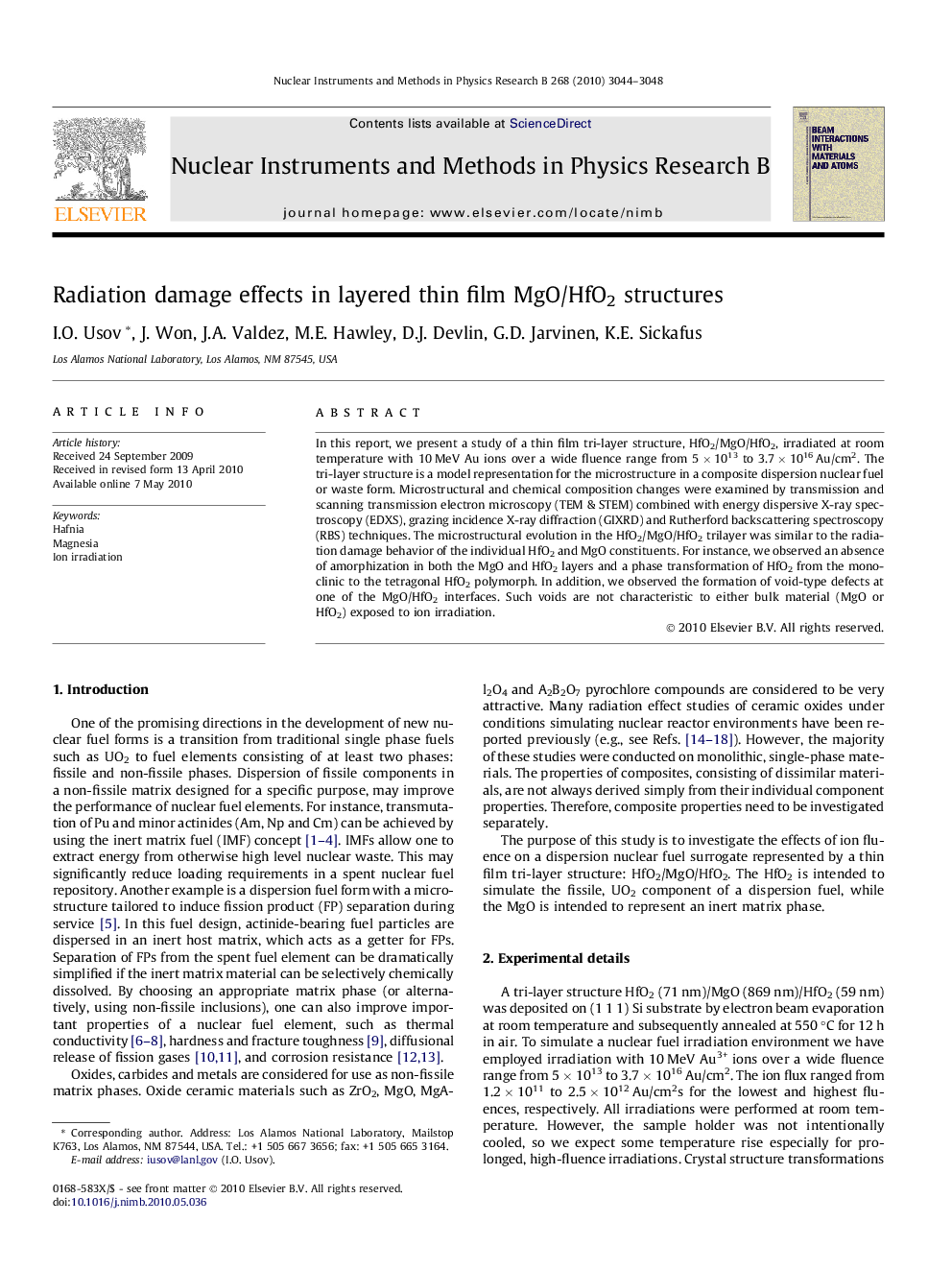| Article ID | Journal | Published Year | Pages | File Type |
|---|---|---|---|---|
| 1681394 | Nuclear Instruments and Methods in Physics Research Section B: Beam Interactions with Materials and Atoms | 2010 | 5 Pages |
In this report, we present a study of a thin film tri-layer structure, HfO2/MgO/HfO2, irradiated at room temperature with 10 MeV Au ions over a wide fluence range from 5 × 1013 to 3.7 × 1016 Au/cm2. The tri-layer structure is a model representation for the microstructure in a composite dispersion nuclear fuel or waste form. Microstructural and chemical composition changes were examined by transmission and scanning transmission electron microscopy (TEM & STEM) combined with energy dispersive X-ray spectroscopy (EDXS), grazing incidence X-ray diffraction (GIXRD) and Rutherford backscattering spectroscopy (RBS) techniques. The microstructural evolution in the HfO2/MgO/HfO2 trilayer was similar to the radiation damage behavior of the individual HfO2 and MgO constituents. For instance, we observed an absence of amorphization in both the MgO and HfO2 layers and a phase transformation of HfO2 from the monoclinic to the tetragonal HfO2 polymorph. In addition, we observed the formation of void-type defects at one of the MgO/HfO2 interfaces. Such voids are not characteristic to either bulk material (MgO or HfO2) exposed to ion irradiation.
